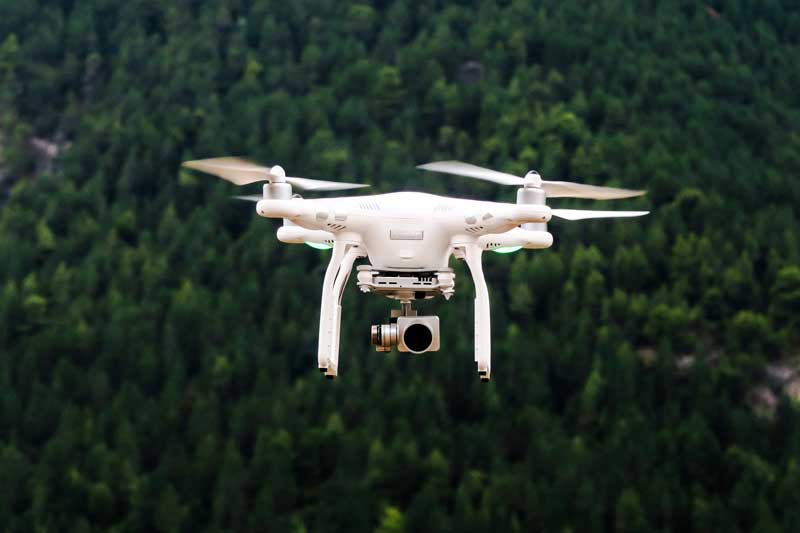Australia is known for its vast outback and remote locations and communities where people choose to live away from modern amenities. Of course, this makes delivering medicines (and other essentials) particularly difficult, yet necessary. The isolation of their location, poor infrastructure, and extreme weather conditions prevent these essential supplies from reaching those who need them most. In an emergency, it’s no secret that access to medications can mean the difference between life and death. As technology improves, creative solutions have arisen to address gaps such as these. In this case, drones are now emerging as a fast, reliable, and cost-effective method for transporting medical supplies to remote areas. These unmanned aerial vehicles (UAVs) are redefining how healthcare is delivered, breaking through barriers of distance and infrastructure to ensure life-saving medicines are accessible to all.
Subscribe for FREE to the HealthTimes magazine
Medical drones are cutting-edge tools with GPS systems that enable precise navigation to pre-programmed locations, ensuring accurate and timely deliveries. Many drones use advanced autopilot systems to manage takeoff, flight, and landing without human intervention. They are designed to carry small, high-priority items such as medications, vaccines, and blood products.
The three main types of drones used include:
-
Fixed-Wing Drones: These look like small airplanes and are great for long-distance deliveries. They are often used for transporting supplies across countries.
-
Rotary Drones: These multi-rotor drones are suited for short distances and precise landings, such as delivering supplies to rooftops or remote clinics with limited space.
-
Hybrid Drones: These drones combine the benefits of both fixed-wing and rotary designs and can take off and land vertically while covering a decent range and speed.
Drones are already in use across the world with their applications growing each and every day, including delivering these essential medical supplies. In fact, they are now becoming so commonplace that you can get food delivered from your favourite restaurant in some parts of the world. How handy is that! One of the most well-known examples is
Swoop Aero, which provides drone delivery services to remote islands and rural communities, improving healthcare access in challenging terrains.
Australia is currently in the process of developing a
specialised medical drone at the University of Sydney, which will increase accessibility to essential health services such as pathology, treatments, and telehealth services in rural and remote regions.
Drones have been used around the world for a number of different tasks, from emergency deliveries to routine medical deliveries. Earlier this year,
UNICEF deployed drones to support the Government of Malawi’s response to floods. UAV flights went out to provide aerial footage to help assess the needs of affected families.
Drones have also being trialled for transporting organs and tissues for transplantation, reducing time and improving success rates. In 2021 there was a
flight by Unither Bioelectronics in which a lung was carried from point to point in Toronto, and a University of Maryland flight in Baltimore in 2019 with a kidney.
It stands to reason that drones are a great solution to address the significant gap in Australia when it comes to getting critical medical supplies to outback communities.
“Huge areas of Australia do not have easy access to medical care. Current technology doesn’t allow drones to cover the required distances while being sustainable, hydrogen-fuelled and emissions free,” said
Associate Professor Verstraete, who is a member of the University’s Net Zero Initiative and School of Aerospace, Mechanical and Mechatronic Engineering. “Our mission is to create a hydrogen-fuelled carbon-neutral VTOL UAV that can carry medical cargo, while providing unparalleled range.”
The integration of drones into healthcare delivery is changing how medical supplies reach remote and underserved areas. Their unique capabilities offer significant advantages over traditional transportation methods, improving both efficiency and accessibility in critical healthcare operations.
Drones bypass road traffic, geographic barriers, and infrastructure damage to deliver supplies directly and efficiently. For example, in Rwanda, drones operated by Zipline cut delivery times for blood supplies from hours to under 30 minutes. They also require fewer resources to operate compared to traditional vehicles, especially in hard-to-reach areas where helicopters or off-road vehicles are often needed. Advanced drones are designed to operate in diverse weather conditions, ensuring healthcare delivery is not interrupted. The benefits of drones in healthcare extend far beyond logistics. By improving speed, accessibility, and reliability, these innovations ensure that life-saving resources reach even the most isolated populations, creating a more effective healthcare system.
As drone technology continues to evolve, its role in healthcare is set to expand dramatically. With advancements in engineering, connectivity, and integration into healthcare systems, medical drones are on track to unlock new possibilities for improving global healthcare delivery. From carrying heavier loads, including more complex medical equipment to extending flight ranges which is pivotal across the Australian landscape, drones have the potential to revolutionise how healthcare is delivered globally.













